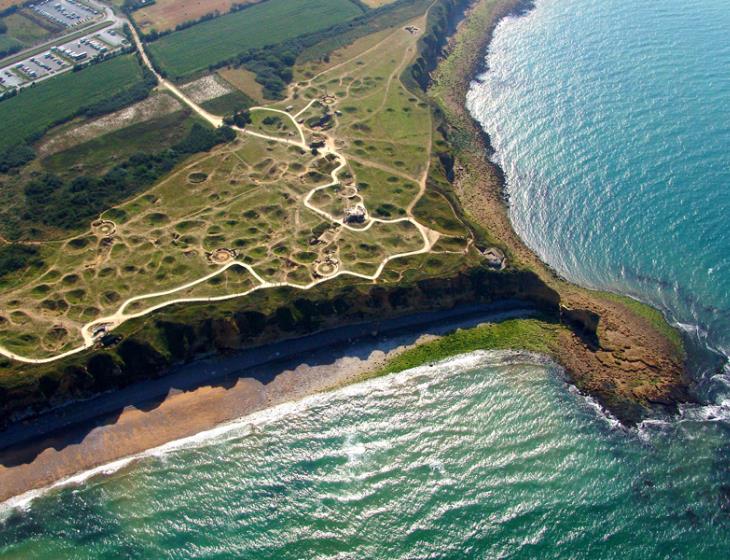I have been mulling this over for the last few days after staring at a muddy* animal paddock. The high-traffic areas of such look like a moonscape with overlapping hoof "craters", complete with a rim of expelled mud and partially filled with water. The surface definitely looked like it had received a heavy artillery bombardment at
40k scale and I was imaging how fighting over such a broken battlefield would look as manoeuvre would be challenging. Of course the next thought was that it would make a pretty cool
40k table to fight over a bombarded hellscape (perhaps with a clear rim to a protected area inside a shield).
Which leads me to this thread: how would the craters of a
40k orbital bombardment actually look? I think there are myriad possible interpretations to this as well as a huge variety of potential weapons used for bombardments, so I'm interested to hear the perspectives of others. I'll start by giving my own.
Firstly, some scope. Most orbital bombardments are likely to be carried out by Imperial, Chaos, Ork, and Tau forces, and probably the Leagues of Votann. I think a Tyranid bombardment is essentially a planetary invasion assault anyway and the various stripes of Eldar probably rarely use such a crude tactic.
Imperial and Chaos bombardments are mainly with either lances or "weapons batteries", which encompasses a hugely diverse range of large weaponry of various scales and types. Weapons batteries include directed energy weapons like lasers and plasma cannons, and more conventional artillery like missile launchers and macro cannons. I think the answer is fairly simple for any directed energy weapon including lances- the energy dumped into the ground probably burns a glassed crater. For the other munitions I think some questions need to be answered.
Most importantly, how do the munitions fired by conventional weapons batteries do damage? Personally I think they face very similar challenges to that faced by battleship combat of the late 19th and early to mid 20th century. Warships are armoured and not fixed in place, floating on the ocean or being in space, so even a very large explosion next to them is unlikely to significantly damage the vessel (although it will likely affect void shields). To penetrate the armour a direct hit is needed by a munition capable of punching through, but the best penetrators (like the sabot rounds used in anti-tank rounds) simply don't do enough damage if they penetrate because warships
are really big. A 16" battleship gun is huge, but it is much smaller as a proportion of the battleship it is on compared to the 120mm (~5") cannon relative to the tank carrying it. To compound this problem, hitting even a warship at long range requires a spread of shots and even landing a handful is very lucky. So every shot that does hit needs to count, meaning the munitions need to carry some kind of explosive charge. Therefore I think the majority of conventional munitions for macrocannon and missile batteries will be some kind of armour-piercing high explosive warhead similar to battleship shells. Warships may carry specialised bombardment rounds that dispense with the armour piercing capability, but these are probably rare as they are for a niche application for a warship and the main rounds will have plenty of bombardment utility (such as bunker busting dug-in, anti-orbital defenses like defence lasers, missile silos, and command bunkers).
The next question is what kind of explosive? The Imperium has access to some very powerful conventional explosives, but I think these are still likely to be insufficient for damaging vessels on the scale of kilometres. I suspect most warheads encorporate plasma or fusion bombs that essentially are nuclear fusion weapons. Fission weapons are usually prohibited in the Imperium due to the long-term contamination of worlds so I doubt there are many of these. Some warships may use rarer warheads like graviton or whatnot with exotic effects.
Putting that together, we have weapons that probably have an armour piercing component paired with a delayed-fuse fusion bomb timed to detonate after clearing the armour. This means the shells will bury into the ground before detonating, so there are likely going to be huge craters unless the fuses can be changed to airburst (quite possible as weapons batteries can lay down blast fields to deter attack craft assaults). There may be some glassing near the epicentre of the craters as seen in real nuclear tests, but probably not a substantial amount.
How do I think that would look? Probably somewhere between the naval bombardment craters at Pointe du Hoc in Normandy, France and the nuclear craters from underground testing at the Nevada Test Site in the USA. The latter are mostly subsidence craters as the underground tests usually vapourised a hole, but they give an idea of scale. Given that hitting a kilometre-sized target over tens of thousands of kilometres range in a three dimensional space is extremely difficult, probably a large number of shots are fired. The batteries on Chaos vessels look to have large numbers of smaller weapons, whereas Imperial battleships often have a few larger gunports. I suspect the latter fires rounds that split into submunitions to cover a wider area, a bit like cluster munitions. So the individual rounds are probably not truly enormous as a good coverage is needed, hence why Nevada seems like a good reference for a broadside.
Here is an image of the Nevada Testing Site:

Here are the craters at Pointe du Hoc (these are from a mix of aerial bombardment, 14" fire from USS Texas, and 5" and 4" fire from destroyers):

I couldn't find any good pictures for 16" bombardment craters at D-Day, the closest was this photo of a tank apparently hit by HMS Rodney. Tank vs 16" shell has gone poorly for the tank:

So what do other people think of?
*The default state of any British paddock for about 3 quarters of a year...